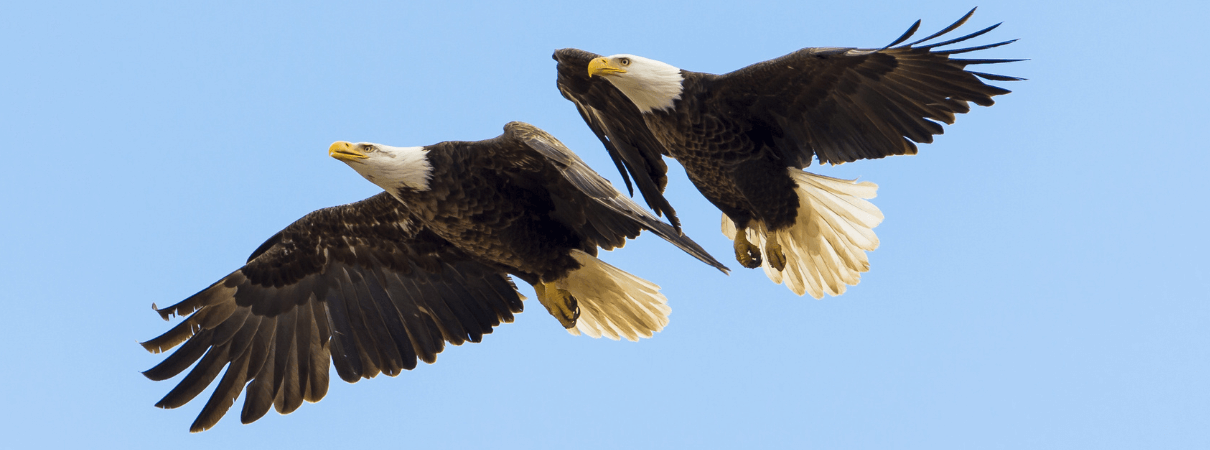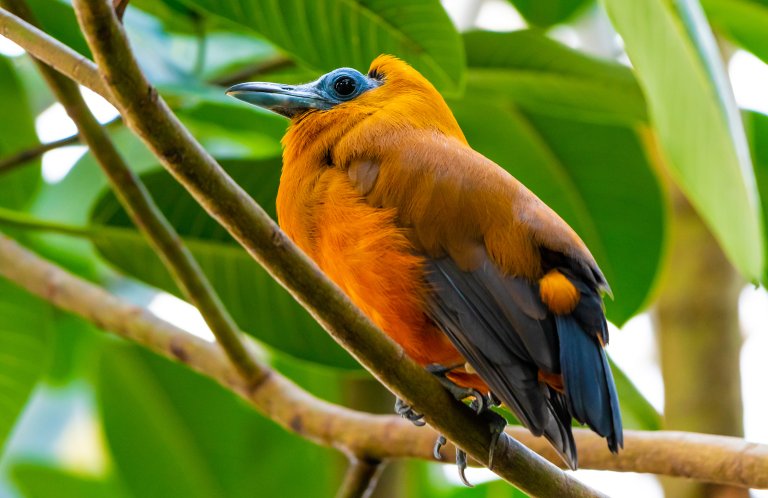To Woo Your Valentine, Take a Page From Our Feathered Friends
With Valentine's Day quickly approaching, do you know what you're going to get the bird-loving object of your affection? Here at ABC, we have some suggestions for you to make this Valentine's Day a bird-friendly one:

If the number-one gift to give on Valentine's Day is chocolates, did you know this head-turning, sweetheart of a gift can now be produced in a very bird-friendly way? In 2021, 17 cocoa farms in the Dominican Republic became certified as the first Bird Friendly cocoa producers in the world by the Smithsonian's certification program. This is the only certification that guarantees that 100 percent of the cocoa produced comes from farms that conserve birds by protecting forests and shade trees beneficial to wildlife.
If you were thinking of giving flowers as a gift, maybe consider instead gifting a native plant. Native plants are far more beneficial to the environment, providing habitat and food sources exotic plants often can't deliver for your local birds and other fauna. Plus, with plants native to your region, you don't run the risk of introducing invasive species into the environment.
Or maybe you want to take your mate on a coffee date? Instead of going out, how about staying in and brewing your own cup of bird-friendly coffee? Shade-grown coffee beans are a wonderful alternative to sun-grown coffee, which comes from farms not shaded by bird-benefiting trees. We suggest Birds & Beans. This coffee company is the only one we know of that produces 100-percent Bird Friendly coffee.
If you seek further inspiration, maybe you could take notes from some of the “romantic” species of birds out there. Here are just a few examples:
Plummeting to Earth

Let's head out to forest- and marsh-bordered rivers, bays, and lakes, where we can take some sky-diving lessons from courting Bald Eagles. The amazing courtship display these raptors produce is truly a sight to behold. During their courtship, a pair will fly high, link talons, and then plummet toward the ground, spinning wildly. This cartwheel display ends only when the pair unlink their talons, seemingly at the last second before impact. Pairs also chase each other, rolling and diving through the air in tandem.
Bald Eagles are at risk, though. And this Valentine's Day, we can show our love for them by considering ways to keep contaminants out of their habitats. The environmental impact of lead might not be the most romantic conversation topic, but it is an important one: Nearly 16 million birds are poisoned by lead annually when they accidentally ingest lead shotgun pellets and ammunition fragments. To help Bald Eagles and other bird species affected by lead poisoning, ABC encourages the hunting and fishing communities to switch to non-lead alternatives. Non-lead options, such as copper, tin, and tungsten, are readily available; the more these products are used, the more affordable and widely accepted they will become.
On the Plains: Jiggling Tails and Stamping Feet

Another great performer is the Sharp-tailed Grouse. On the rolling, brush-dotted grasslands that these chunky birds inhabit, male Sharp-tailed Grouse come together in gatherings known as leks. There, up to 20 males perform elaborate "dances" for potential mates, spreading their wings, inflating purple neck sacs, jiggling their tails, and rapidly stamping their feet up to 20 times a second! As if this weren't enough, displaying males also spin in circles, rush forward, and leap into the air.
As a group, grassland birds have lost about half of their population, and the Sharp-tailed Grouse faces threats like habitat loss and poisoning from pesticides. Over the years, many grassland species have been helped by bird-friendly provisions passed in the Farm Bill. In order to keep things going strong, ABC is promoting a “Bird Saver” package of enhanced practices and new policy ideas that would boost bird conservation efforts while helping farmers, ranchers, and rural communities.
Candor About Condors

If you want a model of parental dedication, look at one of North America's largest birds, the California Condor. It takes a lot of carrion to “carry on” as a condor, so these birds range across many miles of hilly forest, desert, and even seashore to get their fill of the flesh of dead animals.
Pairs are usually monogamous and they are slow breeders, often producing just one chick every two years. Male and female share incubation duties, a venture that spans almost two months. Once hatched, a chick takes about a half year to fly. Not all pairings are the same in the condor world: There have been recorded cases of same-sex and “polyamorous” pairings within the species.
Breeding and reintroduction programs for the California Condor have proven to be a success, and wild populations are slowly rebuilding. There are now free-flying reintroduced populations in California and Arizona (now extended into southern Utah) in the United States, and one in Baja California, Mexico. The newest release site is on Yurok Tribe territory including the Redwoods National Park in Northern California. Although their population has risen from about two dozen in the 1980s to several hundred free-flying birds today, as with eagles, condors face the danger of lead poisoning when they settle down to feed on carcasses that contain lead shot.
Betrothals of the Albatross

The Laysan Albatross may not get married in the human sense, but you'd be hard-pressed to find a better icon of monogamy. Most albatrosses mate for life, despite extremely long commutes that can put extreme distances between mates. An inspiring flyer, this bird can glide over the open ocean for hours at a time without a single flap of its long, narrow wings, sailing hundreds of miles a day on an impressive six-foot span.
When it comes time to breed, these birds return from the high seas to sandy, grassy islands and set to nesting, after bonding through ritualized dancing displays that include bowing, stretching, strutting, clapping and rubbing bills, calling, and raising one wing.
These long-distance flyers face many dangers, from getting caught and drowning in longlines deployed for fishing, to flooding of their nesting grounds due to climate change. You can find out more on how ABC is combating these threats through our Seabirds Program!
Gifts and Warm Wishes for the Birds
This Valentine's Day, if you're still stuck on what to get your loved one, you could gift them an ABC membership, a gift that should make them smile, while supporting the conservation of native birds and their habitats across the Americas. (We even have some fun Valentine's Day-themed eCards you can send along with your gift membership!)
 | Kathryn Stonich is ABC's Digital Communications and Marketing Associate. She is an avid backyard birder and advocate for pigeon and dove rescue. |


















































